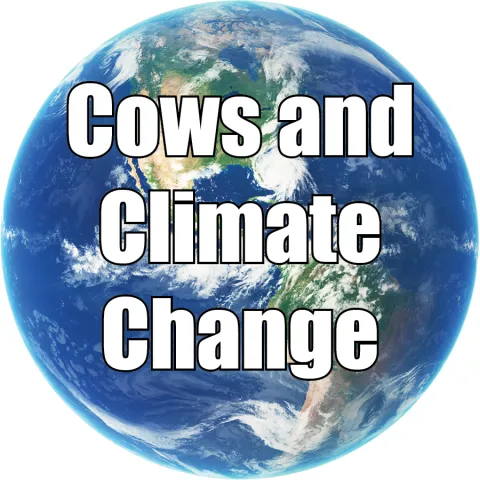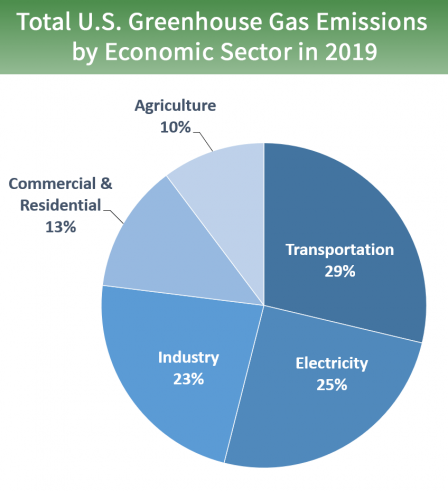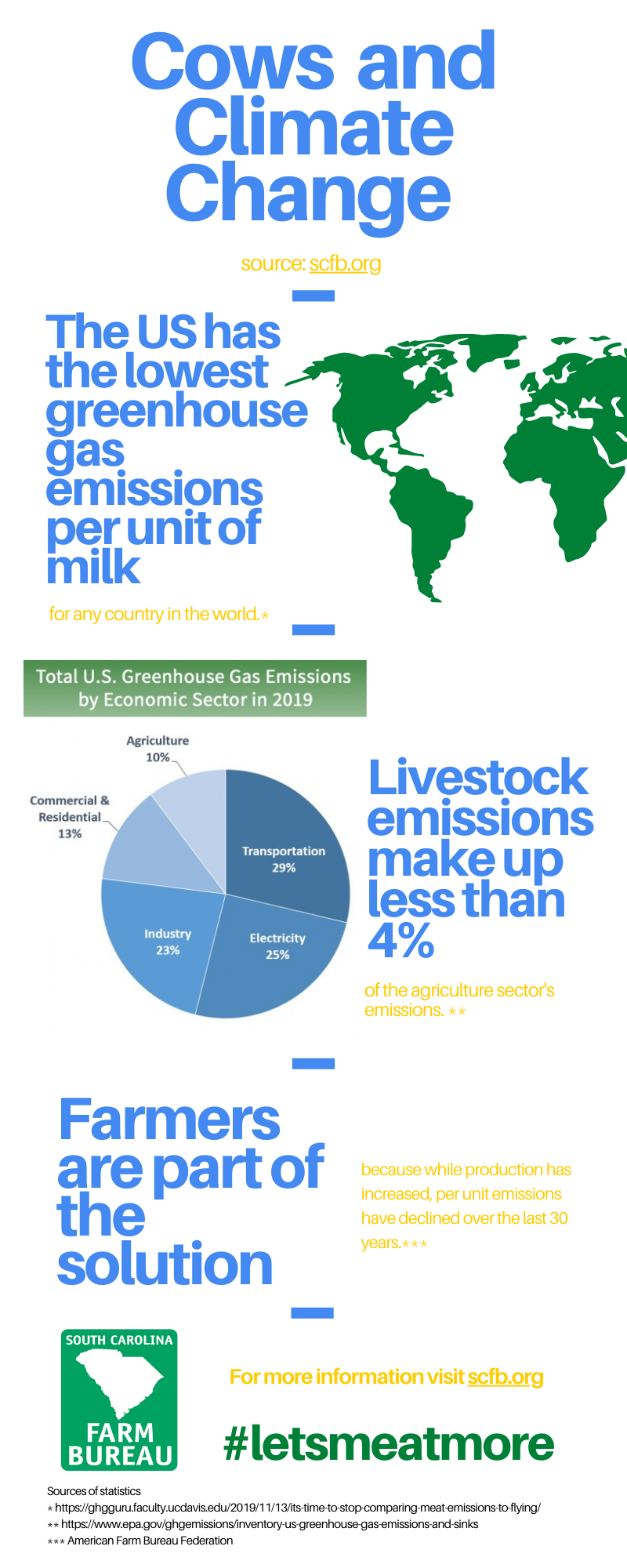

Celebrities, food magazines and even the President have all told us that we should eat less beef to be more pro-planet. The City of Columbia has even issued a proclamation encouraging citizens to skip meat on Mondays as part of a “let’s meat less” campaign. They cite a statistic that cows emit 23-times more greenhouse gases than cars and cutting out meat will help save the earth. These short-sighted, and quite frankly incorrect, statistics do nothing but confuse consumers and perpetuate an agenda that is detrimental to American agriculture. The reality is farmers and ranchers are at the forefront of climate-smart farming, putting scientific solutions, technology and innovation to work to protect our land, air and water.
According to the Environmental Protection Agency, agriculture accounts for 10% of all U.S. emissions, and beef only makes up around 3% of that. For comparison, transportation accounts for 29% of emissions and electricity 25%. Thanks to farmers’ dedication to conserve natural resources, that share drops to negative 2% when additional carbon absorbing practices are factored in.

* Land Use, Land-Use Change, and Forestry in the United States is a net sink and removes approximately 12 percent of these greenhouse gas emissions, this net sink is not shown in the above diagram. All emission estimates from the Inventory of U.S. Greenhouse Gas Emissions and Sinks: 1990–2019.
Source: EPA
Not only are agriculture’s overall emissions low, farmers and ranchers are taking active steps to make their footprint even smaller. For example, farmers are converting waste into energy, and they are participating in conservation programs, which preserve green spaces (like grasslands, forests and wetlands) that absorb greenhouse gases. More than 140 million acres of U.S. farmland are used for conservation efforts and wildlife habitats—that land area is equal to the states of California and New York combined.

Breaking Down Ag’s Environmental Impact
Efficiency and Productivity
Over the last 70 years, U.S. farms have nearly tripled in production while the amount of resources used (including land, energy and fertilizer) has remained rather stable. Compared to 1990, farmers would have needed almost 100 million additional acres to harvest the same amount of corn, cotton, rice, soybeans and wheat they produced in 2018.
Animal Ag
Livestock emissions continue to make up less than 4% of overall GHGs by economic sector. Meanwhile, U.S. farmers have increased production while decreasing per-unit emissions. In the past nearly 30 years:
- Dairy and milk production has increased 48% while per-unit emissions for dairy have declined by almost 26%.
- Beef production has increased 18%, while per-unit emissions have fallen more than 8%.
- Pork production has increased 80%, while per-unit emissions have fallen nearly 20%.
This summer, we’re joining the nationwide #letsmeatMORE initiative in support of livestock farmers and we hope you’ll join us in showcasing all the ways you’re enjoying meat this summer. Follow along on social media for more details and how to participate.

Check out these links for additional information:
It's Time to Stop Comparing Meat Emissions to Flying
Sources of Greenhouse Gas Emissions